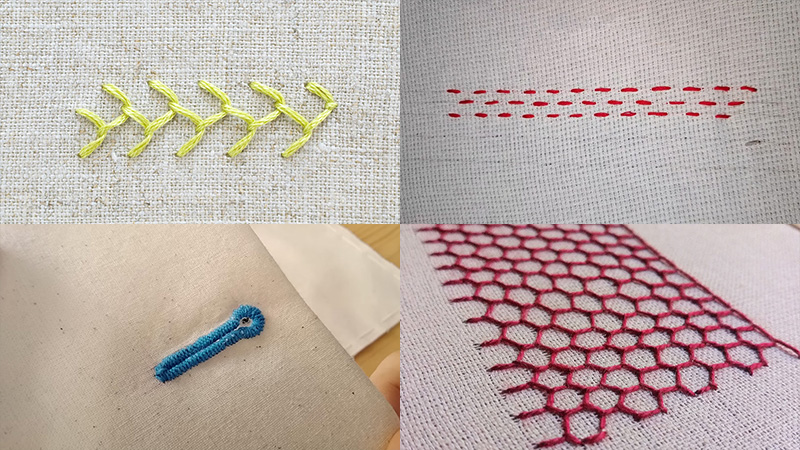
Sewing, a remarkably diverse and artistic skill, empowers individuals to craft an array of functional and aesthetically pleasing creations. Regardless of your proficiency, sewing offers a multitude of avenues to explore.
From the precision of machine sewing to the artistry of handwork, and from the intricate designs of quilting to the delicate details of embroidery, the world of sewing is boundless.
This introduction invites you to embark on a journey through the realms of stitching, where you’ll discover the various techniques that enable the transformation of fabrics into personalized clothing, accessories, home decor, and beyond.
1. Straight Stitch
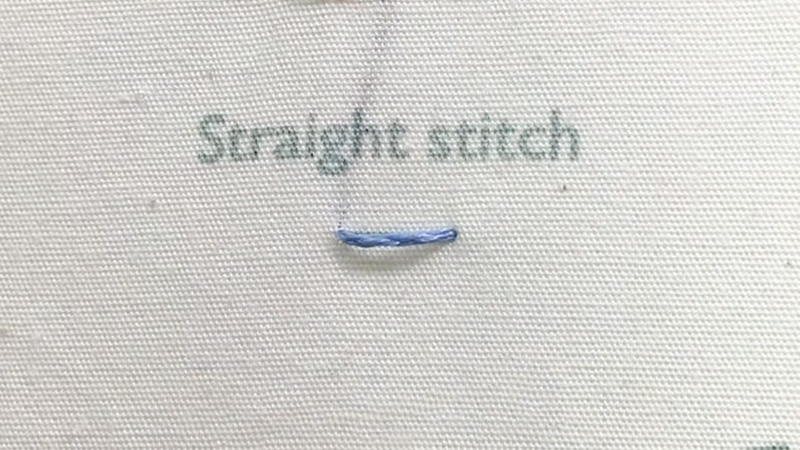
The straight or running stitch is the most basic and fundamental type of stitch used in hand-sewing and embroidery. It is the starting point for all other forms of sewing.
To create this stitch, the needle is passed in and out of the fabric at a consistent distance.
By varying the length of the stitch, the spacing between them, and the direction in which the needle is moved, more complex and decorative stitches can be created.
This is done by changing the regularity of the stitch, and the way the needle passes through the material.
For example, changing the spacing between stitches from regular to irregular can create a zig-zag or scalloped effect, while varying the length of the stitch can create chains or fill in shapes.
By combining these methods, a wide range of decorative stitches can be created.
The straight stitch is a versatile tool for many different types of hand-sewing and embroidery and is the foundation for all other types of sewing.
2. Blind Stitch
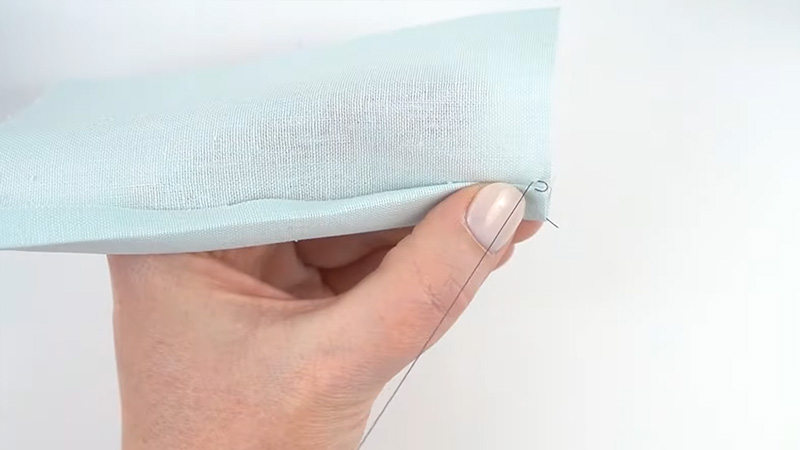
A blind stitch is a type of sewing technique used to join two pieces of fabric together without the stitch thread being visible. This is achieved by using small, even stitches that are close together and situated in a way that they cannot be seen from the outside.
This is especially useful when joining two pieces of fabric that are different colors, as it allows the seam to remain invisible. When compared to a regular sewing stitch, a blind stitch is much more subtle and discreet.
This makes it a preferred choice for many sewers when creating delicate or formal garments, as the stitch will not be visible when worn.
The stitch is also very firm, meaning that when used properly, the pieces of fabric will remain securely joined together. Blind stitching can be done manually or with a special sewing machine.
Sewers may also opt to use a special tool such as a blind stitch foot, which helps to ensure that the stitches are small and even. When used properly, a blind stitch results in a very professional-looking finished product that looks as if it has been professionally tailored.
3. Zigzag Stitch
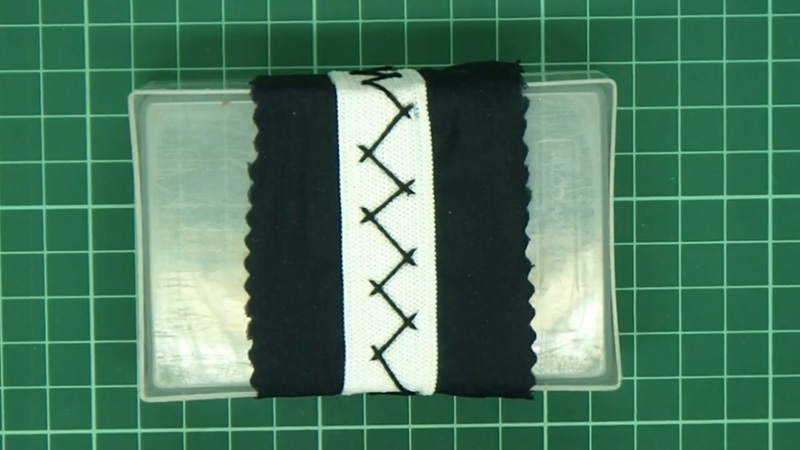
A zigzag stitch is a type of lockstitch that involves a back-and-forth stitching pattern.
This type of stitch is commonly used in situations where a straight stitch would not be suitable, such as when reinforcing buttonholes, when stitching stretchable fabrics, and when temporarily joining two work pieces edge-to-edge.
A zigzag stitch creates a stronger, more durable stitch than a straight stitch does, making it ideal for use in these types of applications.
When reinforcing buttonholes, the zigzag stitch forms a neat and secure border around the buttonhole, making it more secure and less likely to fray or tear.
When stitching stretchable fabrics, the zigzag stitch allows the fabric to stretch without causing the stitch to break.
Finally, when temporarily joining two work pieces edge-to-edge, the zigzag stitch ensures that the pieces remain securely attached until they are permanently sewn together.
In conclusion, the zigzag stitch is a versatile and useful variant of the lockstitch that is ideal for a variety of different applications.
It is particularly well-suited for reinforcing buttonholes, stitching stretchable fabrics, and temporarily joining two work pieces edge-to-edge.
4. Backstitch
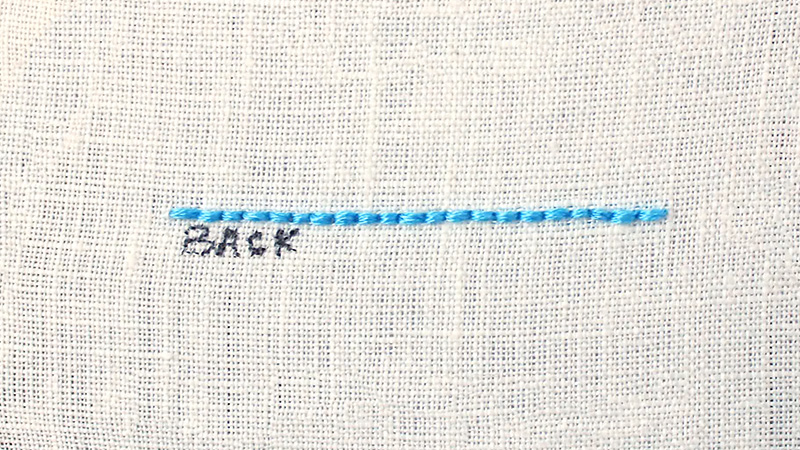
Backstitch, also known as back stitch, is a type of sewing and embroidery stitch that involves making individual stitches that move in a backward direction to the general direction of sewing.
This type of stitch is used to create outlines and outlines of patterns, and it is also used to join two pieces of fabric together. Backstitch is often used in quilting, hand embroidery, and other types of decorative needlework.
Backstitch is one of the most common and versatile stitches used in sewing and embroidery. It is a strong stitch that is easy to learn and use, and it is often used to reinforce seams and edges in many different types of projects.
As with other types of stitches, backstitch can be used in different ways depending on the project. Backstitch has several variants, including stem stitch, outline stitch, and split stitch.
Stem stitch is a variation of backstitch that is used to add texture and dimension to an embroidered design. Outline stitch is a variation of backstitch that is used to create a neat outline of a pattern or design.
Split stitch is a variation of backstitch that is used to add detail to an embroidered design. Overall, backstitch and its variants are a class of embroidery and sewing stitches that are used to create outlines, reinforce seams, and add detail to a project.
It is a versatile and easy-to-learn stitch that is essential for many types of sewing and embroidery projects.
5. Chain Stitch
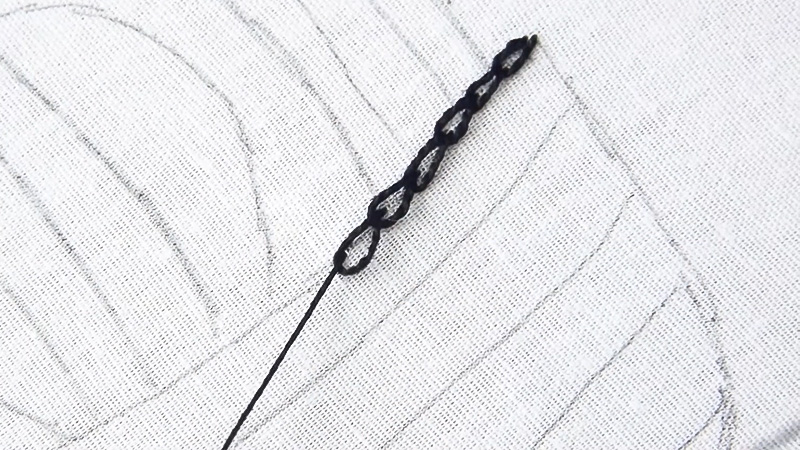
Chain stitch is a popular technique used in both sewing and embroidery. It involves creating a series of looped stitches that are connected to form a chain-like pattern.
This type of craft has been around for many centuries; in fact, examples of Chinese chain stitch embroidery made with silk thread have been found from the Warring States period in China, which dates back to the 5th century BC. Chain stitch embroidery is a very versatile and creative form of craft.
The looped stitches can be used to create a variety of intricate patterns, and the chain-like pattern allows for a wide range of design possibilities.
Chain stitch is also a relatively quick and easy technique to master, making it a great choice for beginners. The chain stitch technique is also used in sewing, typically for decoration or to reinforce a seam.
This type of chain stitch is more commonly known as a “running stitch”.
The running stitch can be used to add a decorative element to the project or to reinforce the material and prevent the seam from coming apart. No matter how you use it, chain stitch is an excellent craft skill to have in your repertoire.
With its long and varied history, chain stitch is sure to be a technique that is enjoyed by crafters for many years to come.
6. Lockstitch
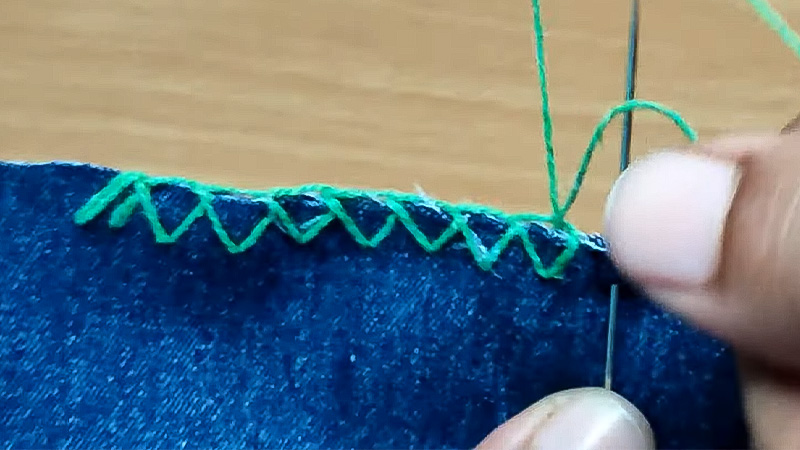
A lockstitch is the most widely used type of stitch created by a sewing machine. It is created by a single needle passing the thread up through the fabric and then looping it back down through the same hole.
This creates a series of interlocking loops that hold the fabrics together. The term “single needle stitching” is often found on dress shirt labels, which refers to a lockstitch.
This stitch is preferred for dress shirts because it is strong, secure, and has a neat, finished look. It is also relatively easy to repair if the fabric is torn or damaged.
Additionally, the single needle stitching prevents the fabric from pulling apart under stress or strain, which is essential for a garment like a dress shirt that needs to last for many years.
7. Blanket Stitch
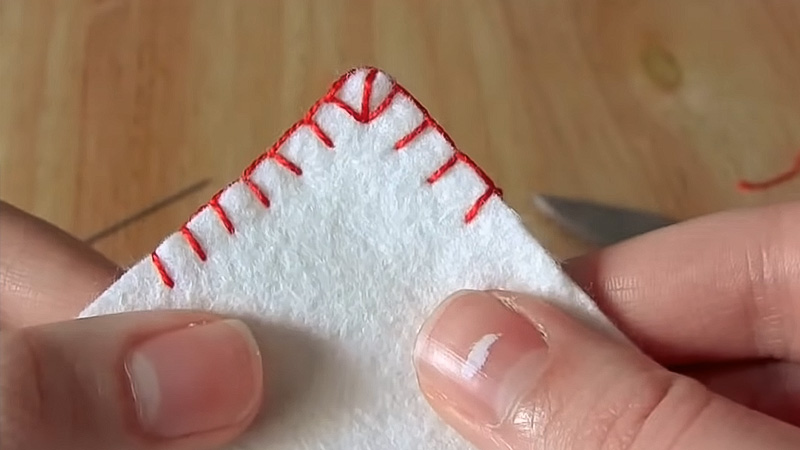
The blanket stitch is an essential stitch used to reinforce the edges of thick materials like blankets. It is also known as a cable stitch or a crochet stitch.
The stitch is used to finish off the edges of a blanket that has not been hemmed.
It is a decorative stitch that can be seen on both sides of the blanket. The stitch itself is a basic running stitch, with a loop of yarn over the top of the edge of the fabric.
This loop is then passed through the fabric and pulled tight to create a strong, secure stitch.
The stitch can be used in a variety of ways to create various patterns and designs. It can be done with one single stitch or multiple stitches in a row.
The stitch can also be used to create a scalloped or fluted edge.
The blanket stitch is not only used to finish blankets but can also be used to reinforce edges on other thick fabrics such as towels and quilts. The stitch is also used to make other items such as bags, hats, and slippers.
It can also be used to create decorative borders on garments and other items. Overall, the blanket stitch is a versatile and practical stitch that is used to reinforce and decorate edges on a variety of fabrics.
It is a simple stitch that can be used to create beautiful and unique patterns with ease.
8. Buttonhole Stitch
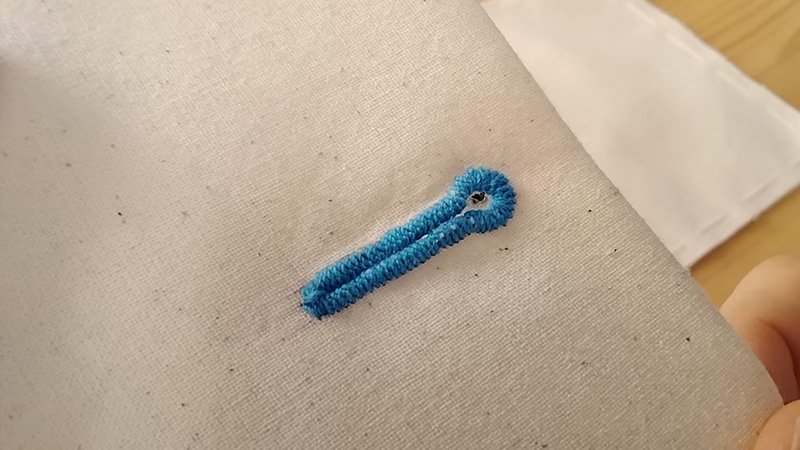
Buttonhole stitch and the related blanket stitch are two types of hand-sewing stitches used in a variety of crafts. Buttonhole stitch is primarily used in tailoring, while blanket stitch is used in both tailoring and embroidery.
They are also used in the creation of needle lace, a type of lace made by looping thread through pre-punched holes on a fabric base.
Buttonhole stitch is a basic, strong stitch that is used to close and reinforce openings in garments, such as at the openings of pockets or sleeves.
It is created by looping the thread around the edges of the opening, with the loops alternating between the front and the back of the fabric.
This creates a decorative, scalloped edge that is also highly durable. In contrast, blanket stitch is used to create decorative edges on a variety of fabrics.
It is created by looping the thread around the edges of the fabric, and then pulling the loop through the fabric, creating a knot. This stitch is often used to give a finished edge to blankets and quilts.
It can also be used to finish the edges of clothing items, such as collars and hems. Both buttonhole stitch and blanket stitch can be used to create beautiful, decorative edges on a variety of fabrics.
They are versatile stitches that can be used in a variety of crafts, from tailoring and embroidery to needle lace-making.
9. Thread
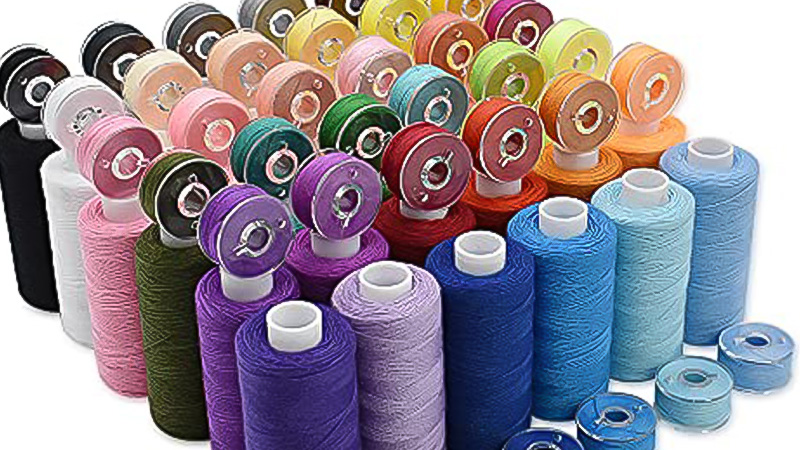
Thread is an important material used in many different ways. It has been used to create and join textiles since ancient times. The ancient Egyptians were particularly skilled at manufacturing thread, using a variety of plant fibers, wool, and hair.
Thread is made up of long strands of material, usually consisting of several filaments or fibers twisted or woven together. It is used for a range of purposes, such as joining fabrics together, creating designs or patterns, and decorating textiles.
Thread can be made from a variety of materials, including cotton, wool, linen, silk, and synthetic fibers. Different techniques are used to create thread, such as spinning, weaving, and knotting.
Thread can be used to create a variety of different items, including clothes, blankets, and bags. It can also be used to sew or mend clothing, and to create decorative embroidery.
Thread is an essential material in the textile industry, and its importance has been recognized since ancient times.
10. Ladder Stitch
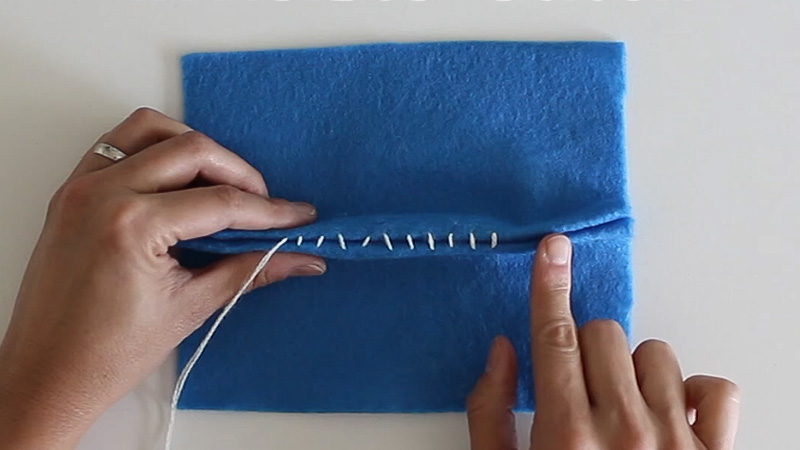
A ladder stitch, mattress stitch, or Henson stitch, is an essential seam-closing technique for many types of garments and items. By using this stitch, one can invisibly join two pieces of fabric together while maintaining a neat and professional look.
It is also referred to as an invisible stitch since it is not visible from the outside of the garment or item. To perform this stitch, one must begin by overlapping the edges of the fabric pieces.
Then, a needle is used to take small stitches across the two pieces, pulling the needle through the fabric and out the other side. As the stitch is worked, the fabric edges will be pulled together, creating a neat seam.
The stitch is worked from one side of the fabric to the other, and the stitches should be the same size and evenly spaced. This is important to ensure a clean and professional finish. Once the seam is finished, the thread can be pulled tight and the knot can be tied off.
This method will create a secure and invisible seam closure that will last a long time. It is an invaluable skill for anyone who works with fabrics and can help create a professional look for any garment or item.
11. Satin Stitch
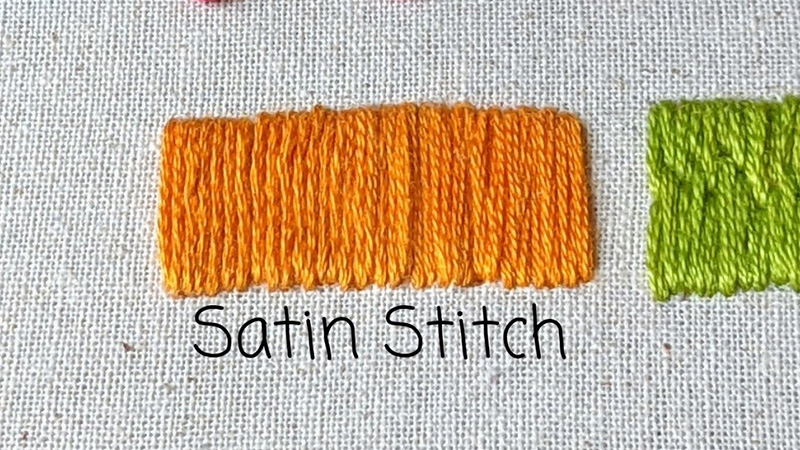
Satin stitch or damask stitch is a type of embroidery technique used in sewing and embroidery. It consists of a series of flat stitches that are used to completely cover a section of the background fabric.
As the name implies, the stitches are usually quite close together, creating a smooth and even surface that is perfect for creating detailed and intricate patterns. The satin stitch is often used to create delicate lines, such as those found in lace or other delicate fabrics.
It can also be used to create bold designs, such as floral patterns or geometric motifs.
In addition, it is often used to fill in large areas of the background fabric, such as entire sections of a garment or quilt. To create the satin stitch, one must use a special needle that is suitable for the fabric being used.
The needle should be small enough to fit through the fabric without damaging it, but large enough to create a tight, even stitch.
For smaller or more delicate fabrics, a needle with a smaller eye may be necessary. Narrow rows of satin stitch can be created on a standard sewing machine using a zigzag stitch or a special satin stitch foot.
The zigzag stitch will create a slightly thicker line of stitches, while the satin stitch foot is designed to create a more even and consistent stitch.
In either case, the stitches should be as close together as possible to create a smooth and even surface. Overall, the satin stitch is a versatile and beautiful embroidery technique that can be used to create delicate and intricate patterns or bold and dramatic designs.
It is a great way to add a unique and beautiful touch to any sewing or embroidery project.
12. Overlock
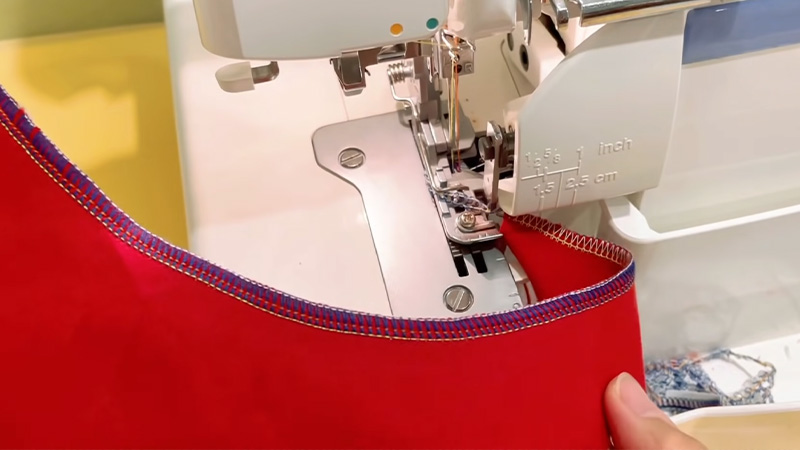
An overlock stitch is a type of stitch used in sewing that sews over the edges of one or two pieces of fabric. It is most often used for edging, hemming, and seaming.
To create this stitch, an overlock sewing machine is used.
The fabric is fed through the machine and the edges are cut as they go through, leaving a neat finished edge. Some overlock machines are made without cutters, so the fabric must be cut before it is fed through.
This stitch provides a strong and secure seam, which makes it a great choice for heavier fabrics like denim or canvas. It also gives a professional look to finished garments.
The overlock stitch is an essential tool for any seamstress or quilter.
13. Cross-stitch
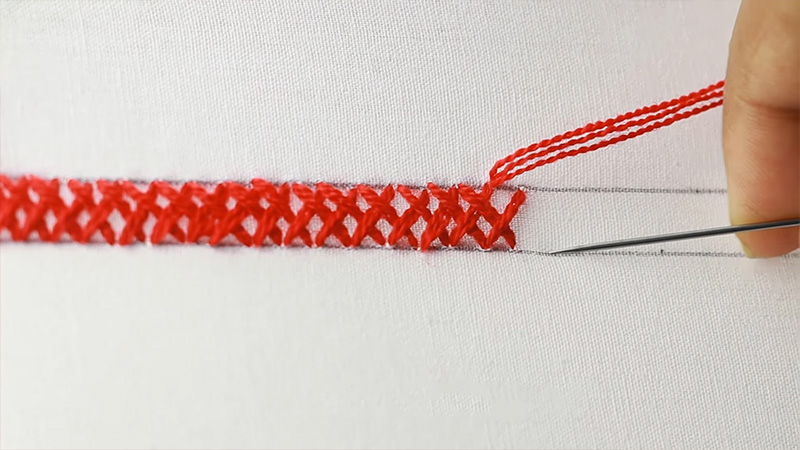
Cross-stitch is a traditional form of sewing that is used to create beautiful designs and patterns.
It is a type of counted-thread embroidery, which means that the stitcher needs to count the number of threads in each direction of their chosen fabric in order to ensure that all of the stitches are the same size and even in appearance.
This technique involves creating X-shaped stitches that are arranged in a tiled, raster-like pattern. This produces the desired design, with the finished product often being used to create intricate pictures or patterns.
Cross-stitch is a popular form of embroidery that can be used to create stunning works of art. It is also a great way to pass the time while honing one’s sewing skills.
14. Scallops
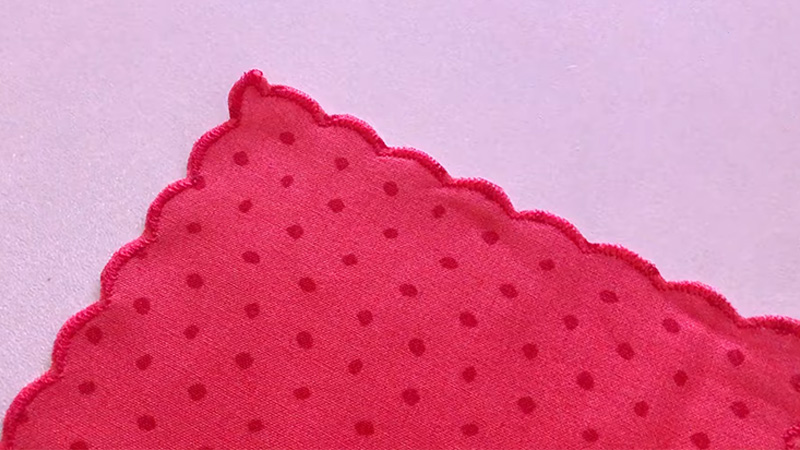
Scallop is a term used to describe a variety of bivalve mollusks that belong to the taxonomic family Pectinidae. These mollusks, commonly referred to as scallops, are characterized by their two-hinged shells that open and close like a clam.
The shells are usually bright and colorful, and the meat is sought after by many seafood lovers. Scallops are found in shallow to deep ocean waters throughout the world and are often harvested for their delicious meat.
The term “scallop” is also sometimes used to refer to species of mollusks that belong to other closely related families within the superfamily Pectinoidea.
This superfamily includes the thorny oysters, which are characterized by their thick, spiny shells.
The meat of these mollusks is not as widely sought after as the meat of scallops, but they are still harvested commercially for their high-protein meat.
In conclusion, the term “scallop” is used to refer to a variety of different species of mollusks, including those belonging to the taxonomic family Pectinidae and those belonging to the superfamily Pectinoidea.
These mollusks are harvested commercially for their meat, which is highly sought after for its flavor and texture.
Kingdom Animalia Phylum Mollusca Class Bivalvia Order Pectinida Family Pectinidae.
15. Topstitch
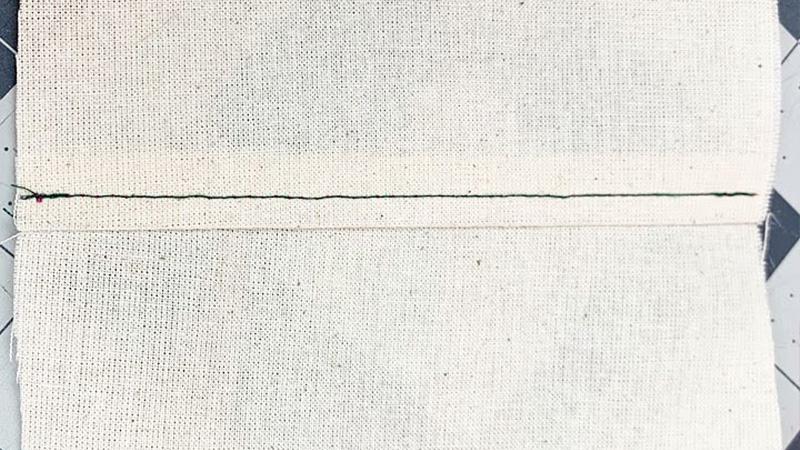
Topstitching is a sewing technique that involves stitching a line of thread that is visible from the outside of a garment. This stitching can be either decorative or functional in nature.
Decorative topstitching can be used to add detail or interest to a garment, while functional topstitching is used to strengthen or reinforce certain areas.
Topstitching is often used on garment edges, such as necklines and hems, where it helps keep facings in place and gives a crisp edge. It can also be used to attach pockets, waistbands, and cuffs, and to stitch down pleats and tucks, creating a finished look.
By using topstitching, garments become more durable and have a more professional look. Topstitching is a great way to add structure and strength to a garment while also making it look more polished and finished.
16. Herringbone Stitch
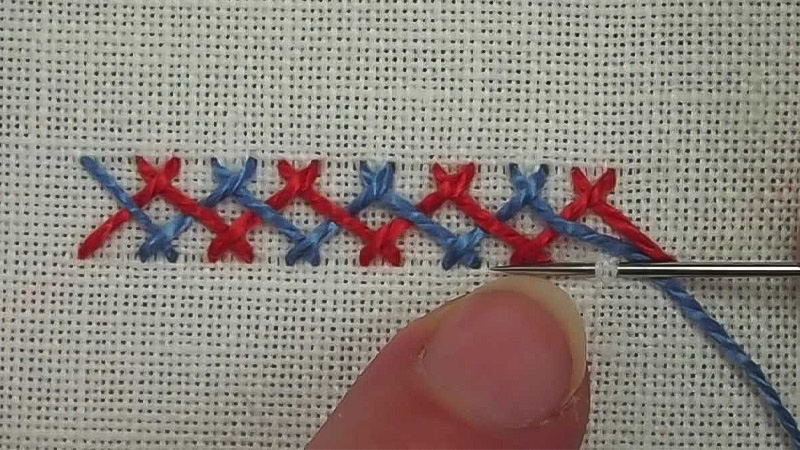
A herringbone stitch is a type of stitch used in needlework such as embroidery, knitting, and crochet. It is named after the herring fish due to its resemblance to the bones extending from the spine of the fish.
This stitch is used to create a fabric pattern that closely resembles herringbone cloth. In knitting, it is a stitch that creates a fabric pattern with a herringbone pattern that looks just like the bones of the herring fish.
The stitch is used widely in needlework projects and is a favorite among many crafters. It can be used to create intricate designs or used as a single stitch to create a simple pattern.
The herringbone stitch can also be used to create a variety of textures.
With a few simple stitches, one can create a fabric that looks like a herringbone pattern. The herringbone stitch is a versatile stitch that can be used to create a variety of designs and fabrics..
17. Feather Stitch
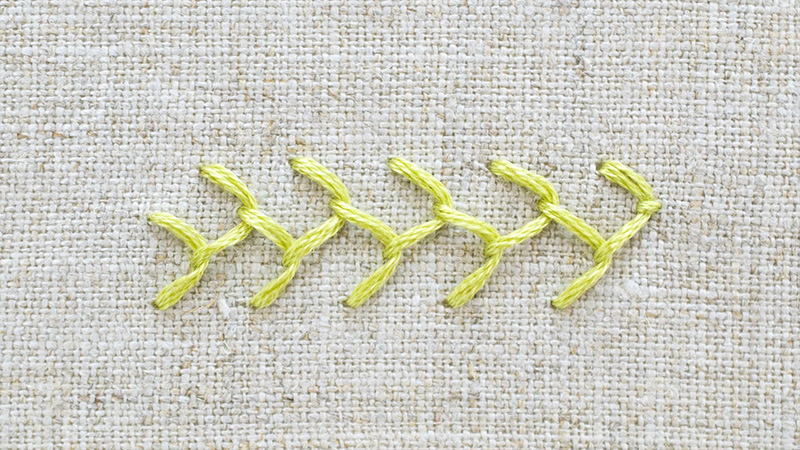
Featherstitch and Cretan stitch are embroidery techniques which create a textured effect. They are composed of looped stitches, which are alternately worked from the right and left of a central rib.
This unique stitch pattern is used to create interesting borders or decorative elements on fabric.
The loops created by the stitches form a pattern similar to the feathers of a bird, giving them the name “featherstitch”.The Fly stitch is closely related to featherstitch and Cretan stitch, as it is also composed of open, looped stitches.
However, the loops of the Fly stitch are usually much more elongated than those of the other two stitches.
The Fly stitch is often used to create delicate details on embroidered pieces, like small flowers or other accents.Overall, the feather stitch, Cretan stitch, and Fly stitch are all related techniques which use looped stitches and create textured effects.
They are often used together in embroidery to create beautiful patterns and decorative elements.
18. Pad Stitch
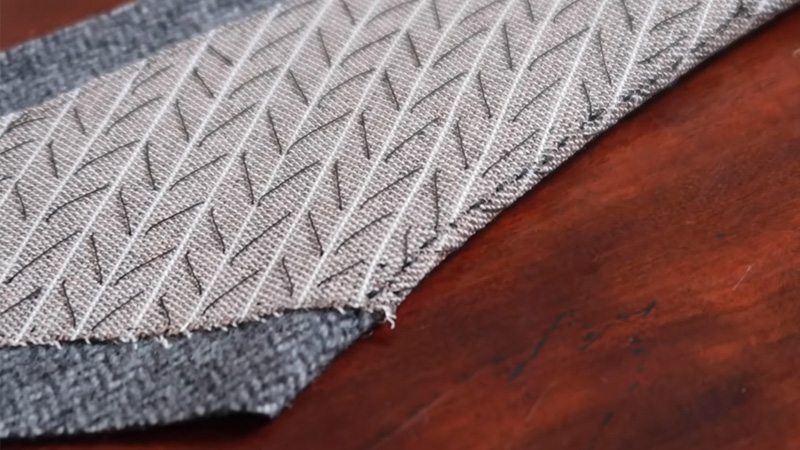
Pad stitches are a type of running stitch used to secure two or more layers of fabric together. This type of stitch is created by placing small stitches perpendicular to the line of stitching.
The size and density of these stitches determine the firmness of the fabric layers.
Smaller, denser stitches will create a much firmer bond than larger, less dense stitches. Pad stitching is commonly used in tailoring and quilting, as it allows for a secure bond between the fabric layers.
This stitch is also used in upholstery and garment construction, as it allows for a durable, long-lasting bond. By using pad stitching, the fabric layers are allowed to move freely, while still providing a secure bond.
This makes it an ideal option for garments that require flexibility and movement.
19. Hemstitch
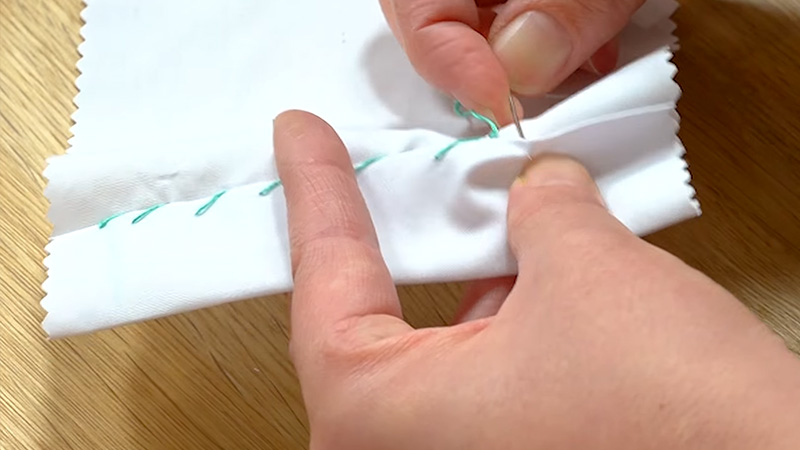
Hemstitching is an intricate hand-sewing technique used to create decorative edges on clothing and household linens. It involves the use of a needle and thread to make small, evenly spaced stitches in the fabric around the edge of the item.
The stitches are typically worked in a contrasting color, so they stand out against the fabric and create an eye-catching effect. This technique can be used to create a variety of decorative patterns, such as zigzags, diamonds, or circles.
The stitches are usually worked on the underside of the fabric, so they’re not visible when the item is worn or displayed. Hemstitching is an easy way to add a touch of elegance to any item, from clothing and bed linens to tablecloths and curtains.
20. Tack
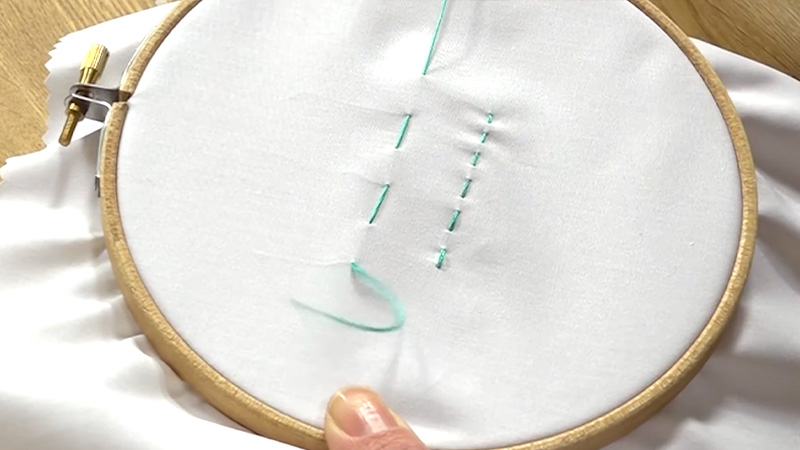
Tacking is a fundamental sewing technique that is used for a wide range of purposes. It involves stitching together two pieces of fabric with temporary stitches, which can then be removed once the fabric is sewn properly.
Tacking is used to hold a seam in place until it is secured with permanent stitches, as well as to transfer pattern markings onto the fabric.
This technique is especially useful when sewing complex pieces that require precise alignment, as the temporary stitches will ensure that the two pieces of fabric are held in place and that the pattern markings are accurately placed.
Tacking is a quick and easy way to prepare for more detailed sewing work and is an essential part of any garment-making project.
21. Plain Seam
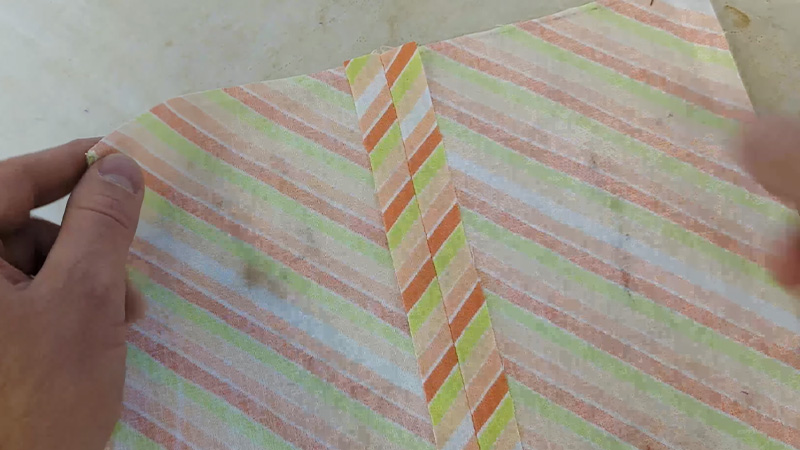
A plain seam, a fundamental sewing technique, joins two fabric pieces with a straight stitch. The fabric’s right sides are placed together, aligning the edges.
A sewing machine or hand stitching is used to create a neat, strong seam. This type of seam is commonly used in garment construction and various sewing projects.
It’s versatile and ideal for lightweight to medium-weight fabrics. After stitching, the seam allowances are often pressed open or to one side for a polished finish.
The plain seam’s simplicity makes it a go-to choice for creating clean, inconspicuous joins in a wide range of sewing endeavors.
22. Double Stitched Seam
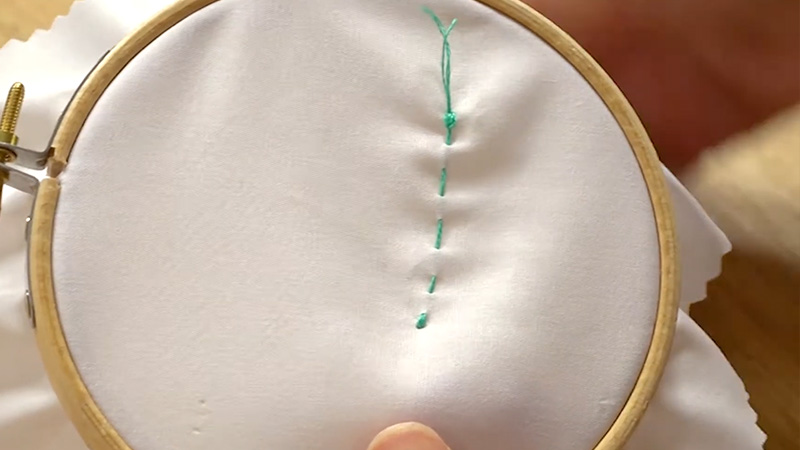
A double-stitched seam is a robust sewing technique that provides extra strength and durability. It involves stitching two parallel lines of stitches along the fabric edges.
The fabric pieces are placed together, and the first line of stitching is made close to the edge. Then, a second row of stitches is sewn a specific distance away, typically 1/8 to 1/4 inch, depending on the desired seam width.
This type of seam is commonly used for heavy fabrics, such as denim or canvas, and in items that undergo significant stress, like bags or jeans. The double-stitched seam not only reinforces the seam but also adds a decorative touch to the finished piece.
23. Darning Stitch
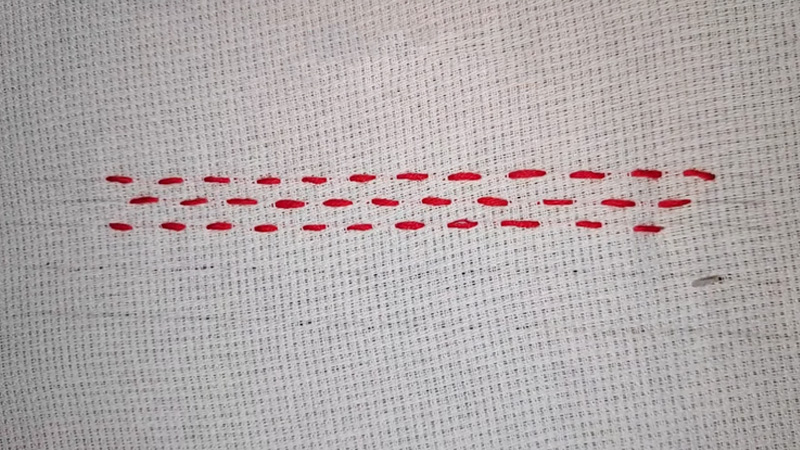
The darning stitch is a needlework technique used to repair holes or worn areas in fabric. It involves weaving thread in a crisscross pattern across the damaged area, mimicking the surrounding fabric’s texture.
By threading the needle over and under the threads of the fabric, the hole is gradually covered, creating a seamless mend. Darning stitches can be executed by hand or using a sewing machine with a darning foot.
This technique is both practical for extending the life of garments and artistic, as creative patterns can be woven. Darning preserves textiles and adds a touch of ingenuity to repairs.
24. Honeycomb Stitch
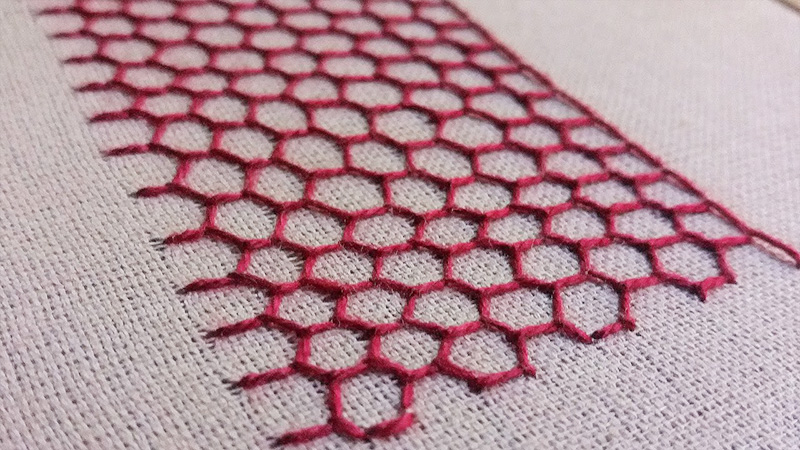
The honeycomb stitch is a captivating knitting pattern that forms a textured, hexagonal design resembling a honeycomb. Created by alternating knits and purls over specific rows, this stitch creates a three-dimensional effect.
By working knit stitches into purl stitches and vice versa, a clustered, raised pattern emerges. This stitch is often used for blankets, scarves, and sweaters, adding visual interest and warmth to knitted items.
The honeycomb texture offers a cozy, tactile feel while showcasing the artistry of knitting. Whether for novices or experienced knitters, the honeycomb stitch exemplifies the beauty achievable through skillful manipulation of yarn and needles.
Conclusion
Sewing is a remarkably versatile craft, offering endless possibilities for creative expression. Whether you’re a novice or a seasoned pro, there’s a sewing technique suited to your skills.
From delicate hand stitches to the precision of machine sewing, and from intricate embroidery to the artistry of quilting, each method enables the crafting of both aesthetically pleasing and functional pieces.
The joy lies not only in the final product but also in the journey of creation. So, whether you’re stitching for practicality or artistic fulfillment, sewing nurtures a sense of accomplishment and an avenue for your imagination to flourish.
Embrace the stitches, relish the process, and revel in the satisfaction of bringing your visions to life.
Leave a Reply